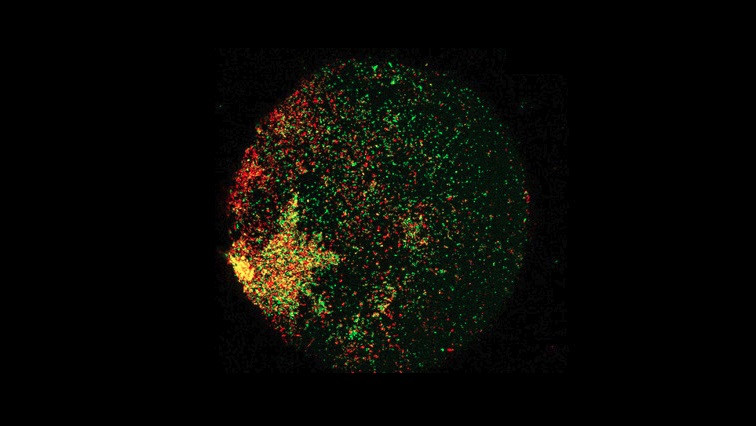More and more products contain nanoparticles: very small particles on the scale of 1-100 nanometres. Although they are impossible to see with the human eye, they can have a big effect. 'Nanomaterials are in many more products than you would expect,' Brinkmann says. 'To keep sports materials or socks odourless, for example, they incorporate silver nanoparticles into the textile. But even some sunscreens contain nanoparticles. These ensure that the creams absorbs UV light but remain transparent at the same time. People like that because it means you don't see the cream on your skin.'
In the biomedical world, they are also using nanomaterials to deliver drugs more precisely into the right (cancer) cells or tissues. As a result, the drugs have fewer side effects. And in agriculture, people are trying to use nanoparticles to more precisely deliver chemicals such as fertilisers to crops. As a result, less of these substances may end up in the environment.'
Testing could be done more realistic
The applications of nanomaterials are endless, but are they also safe? To assess that, there are tools and protocols that help estimate whether nanoparticles are toxic to humans or the environment. Yet the conditions in which they test nanoparticles are not always fully realistic, Brinkmann says. 'Risk assessors rarely take microbes into account. And yet these microscopic organisms are present on all tissues of all organisms on earth. For example, our skin, intestines and lungs are full of them, and so are plants and animals.'
To find out whether we need to take microbes more into account, Brinkmann went into the lab. 'We tested the effects of silver and titanium dioxide nanoparticles by comparing zebrafish larvae with microbes to sterile larvae without microbes.' She exposed both groups to equal concentrations of nanoparticles. At each concentration, Brinkmann compared how the larvae with microbes responded to them compared to the larvae without microbes. 'Then the question is whether the microbes have a protective or negative effect.'

Titanium dioxide nanoparticles
Protective function of microbes
The tests showed that for certain nanoparticles, there was indeed a difference. 'The sterile larvae died at lower concentrations of silver nanoparticles than the larvae with microbes. So in this case, the microbes on the organism had a protective effect against the toxicity of the nanoparticles.'
Brinkmann was very curious about the mechanism behind this protective effect. 'Zebrafish have so-called 'toll-like receptors' to recognise microbes. When parts of the microbes come into contact with these receptors, it stimulates an anti-inflammatory response in the zebrafish cells. Silver particles do the opposite. These actually cause an inflammatory response in the cells. We assume that the response of zebrafish to microbes therefore compensates for the response of zebrafish to silver particles.'
Many other organisms, including humans, recognise microbes in the same way. 'Therefore, we expect that microbes can also protect other organisms from the inflammatory effects of such nanoparticles.' In addition, this research also provides tools to better assess the chronic effects of exposure to nanoparticles. ‘For example, what happens when the protective microbes die over time due to the nanoparticles?'
Further research in postdoc
With the results of this study, researchers can help improve the tools and protocols to assess the safety of nanomaterials. 'And that is important. Not only because nanoparticles are being incorporated into more and more products, but also because new materials are constantly appearing on the market. We cannot test all these new materials piece by piece, so it is important to have correct models with which we can estimate human and environmental safety.'
During her research, Brinkmann collaborated with scientists from different research fields. 'Among them were physical modellers, molecular biologists, chemists and biophysicists. The exchange we had at the interface of our fields was very inspiring.' Therefore, the research on nanoparticles won't stop for her. 'I will continue as a postdoc at the Institute of Environmental Sciences (CML). I'd like to keep working on issues concerning the safety and development of nanoparticles.'
Read the original article on Leiden University.







